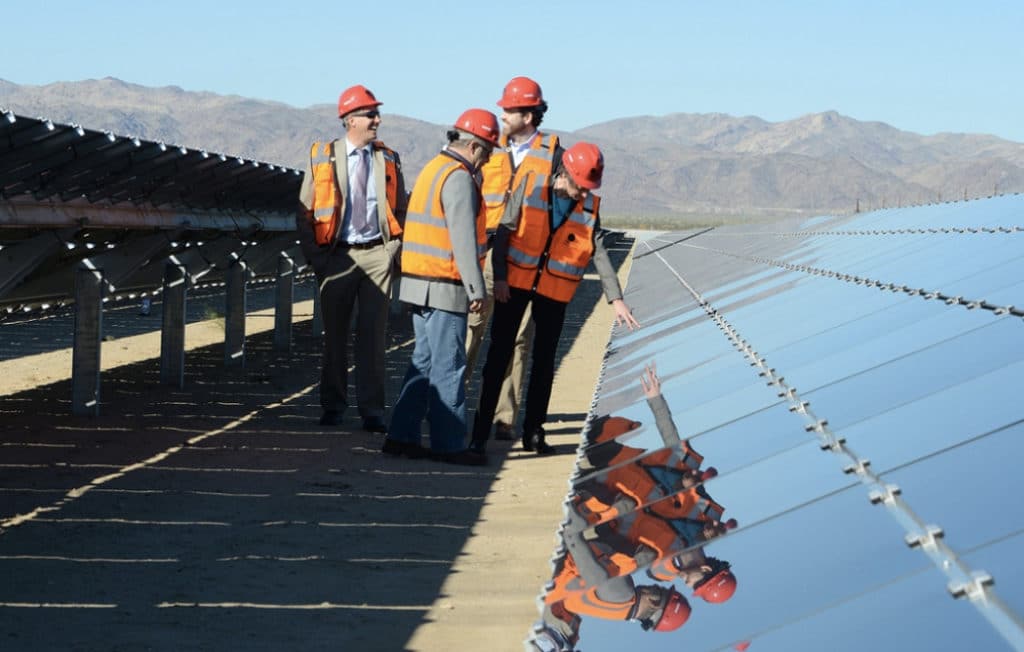The two-year tax holiday enjoyed by solar and wind projects operating on federally-owned lands is officially over, as the Trump administration has handed the owners of these projects some hefty retroactive bills.
And while the majority of project owners knew it was but a matter of time until the bills came due, the timing of this action is about as bad as it gets. The solar industry has been one of the hardest hit by the Covid-19 pandemic, with the Solar Energy Industry Association projecting that there will be 188,000 jobs in solar by June, much lower than the previous projections of 302,000.
Concurrently, the Trump administration has begun to reduce royalty payments and suspend leases for oil companies drilling on federal lands, citing the coronavirus pandemic. While the reported number of companies that will be receiving these benefits is small, it’s something that has caught the eye of renewable energy proponents, who have long called out 45’s preferential treatment of the oil and coal industries.
However, as poor as the timing is and as vulnerable as the industry may be, executive director of the large-scale solar association, Shannon Eddy, says that many project owners had prepared for this day coming. Some project owners have specific funds set aside for this rent, while others paid it, even as they weren’t being billed.
“The billings didn’t happen last year,” Eddy said. “The Bureau of Land Management is legally obligated to issue these bills to their leaseholders on an annual basis, so the fact that they sent them is not a surprise.”
The increasing difficulty of securing federal lands
To Eddy, the issue isn’t retroactive collection, but the increasing difficulty of securing federal lands at an economical market rate. This issue will only be compounded as these rent rates are set to raise in 2021.
“The really big story here, in my mind, is that we are sitting on a situation where public lands are desperately needed for renewable development and are priced completely out of market,” Eddy told pv magazine. “What the industry has been asking for are leasing costs that are fair market value… It’s just that the leasing rates right now far, far exceed fair market value.”
Eddy went on to illustrate the immense spike in demand that’s expected as more industries and sectors become electrified. Without market-competitive public land, the development of these necessary resources only gets harder. It’s an issue close to Eddy, a California resident who was involved in the development of SB 100.
“We’re also decarbonizing all these other sectors in California and so our grid is expected to go from 46 GW today to 200 GW by 2045 because everything is going to get electrified. What the modeling shows is that, of the 200 GW for that time period, they’re looking for 90 GW to 150 GW to be met with solar – and that’s not rooftop. When you look at putting that much solar onto the grid in California, you’ve got to look at where those projects are going to go. Appropriate public lands must be a part of that solution.”
This content is protected by copyright and may not be reused. If you want to cooperate with us and would like to reuse some of our content, please contact: editors@pv-magazine.com.









““We’re also decarbonizing all these other sectors in California and so our grid is expected to go from 46 GW today to 200 GW by 2045 because everything is going to get electrified. What the modeling shows is that, of the 200 GW for that time period, they’re looking for 90 GW to 150 GW to be met with solar – and that’s not rooftop. When you look at putting that much solar onto the grid in California, you’ve got to look at where those projects are going to go. Appropriate public lands must be a part of that solution.””
The utility grid efficiency is skewed into inefficient and will stay there until, micro-grids and power nodes are established to get rid of some of these intrinsic grid inefficiencies. Every transformer step increase or decrease along the grid loses about 3% of the generated power. The less transformer steps, the less transformer losses along the way. For ratepayers at the residential level, this is from 15% generated power loss for a “good” grid interconnection to 25% grid losses for many rural grid interconnections. Solar PV is best used on the roof of the home or business that uses the generated power. Excess power is best stored BTM in a smart ESS and self consumed after the sun goes down. Right we know that solar PV is more efficient on the roof of a residence than out in the middle of no where, with onerous transformer power losses. Now solar PV farms that are formed into micro-grids near population centers that have their own energy storage system, can be constructed with two maybe three transformer steps less and save 6% to 9% of lost generated power along the grid. With solar PV it is all location, location, location for maximum efficiency. There are a lot of big box stores built in communities that have been vacant for months or years. Why not load their roofs with the latest/greatest solar PV technology, install energy storage systems in cargo containers inside these abandoned big box stores and be able to island communities from power outages, while generating electricity for the local community?